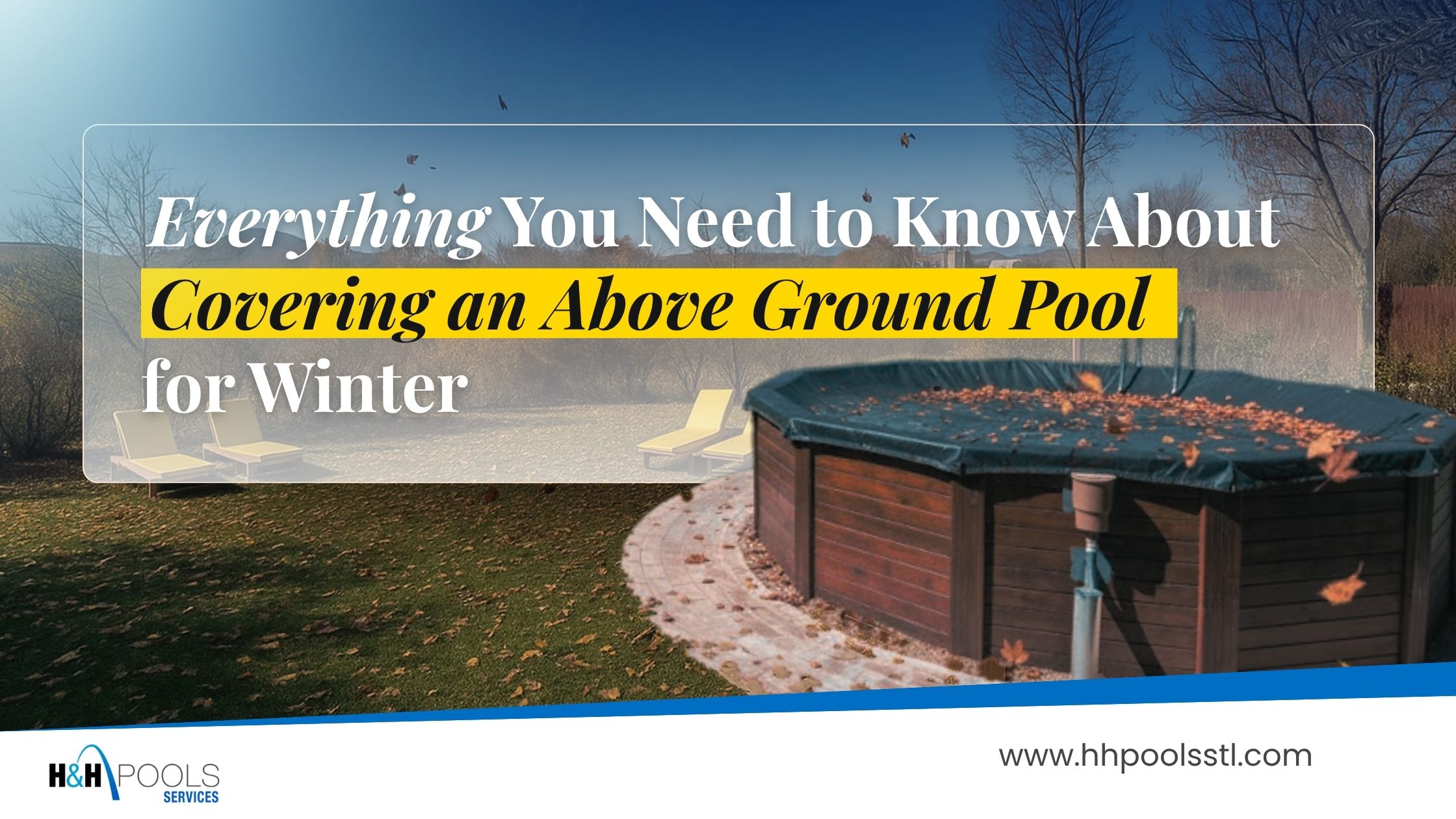
Everything You Need to Know About How to Cover Above Ground Pool for Winter
Learn how to cover above ground pool for winter the right way. Protect your pool from ice, debris, and damage with this step-by-step guide.
As temperatures begin to drop and swimming season comes to an end, every pool owner starts to wonder how to cover above ground pool for winter properly. Doing this the right way keeps your pool safe from snow, ice, and debris — and makes opening it next spring much easier.
For homeowners across Chesterfield, Kirkwood, Ladue, St. Charles, and nearby areas, getting your pool ready for cold weather is one of the smartest steps you can take before winter sets in. Doing so not only protects your investment but also helps you avoid costly repairs and time-consuming cleanups once warmer weather returns.
In this guide, we’ll walk you through everything you need to know — from choosing the best type of pool cover to securing it properly and keeping it in top shape all season long.
If you haven’t scheduled your closing yet, check out our Top Tips for Scheduling a Pool Closing Service Early to plan ahead before the first freeze hits.
Why You Should Cover Your Pool for Winter
Winter can be tough on an uncovered pool. As the temperatures fall, water freezes and expands. This might not seem like a big deal, but that expansion can put pressure on your pool walls, liner, and plumbing. When water freezes inside pipes or fittings, it can cause cracks or leaks that are costly to repair.
Beyond freezing, an uncovered pool is exposed to windblown leaves, sticks, and dirt. Over time, this debris can stain the liner, clog your system, and make spring cleaning a headache.
A good winter pool cover solves these problems. It prevents debris from falling in, helps control algae growth, and shields your pool from harsh weather. It’s like putting a protective lid on your pool that keeps it clean and safe during the months you’re not using it.
If you live in an area where temperatures regularly dip below freezing or where leaf fall is heavy, using a pool winter cover isn’t optional — it’s essential. Taking this simple step can mean the difference between an easy spring opening and several weeks of extra work and repairs.
Choosing the Right Pool Cover

Not all covers are created equal, and the right one can make all the difference in how well your pool holds up over winter. Here’s what to know when choosing your cover:
Prepare Your Pool Before Covering
Before you put on your cover, spend some time preparing your pool. This step determines how clean and easy your reopening will be in spring.
By doing these simple steps, you make sure your pool stays in good condition beneath your above ground pool cover all winter long.
Step-by-Step: How to Cover Above Ground Pool for Winter
Now that your pool is clean and balanced, it’s time for the most important part — actually covering it. Follow these steps to do it right:
Preventing Winter Damage
Even with the best cover, winter can bring surprises. The key is staying proactive.
For more safety and care advice, read our Guide to Winterize Pool: How Long Should You Run Your Pump? — it covers ways to protect your pool from cold-weather stress.
Caring for Your Pool Cover Long-Term
Your pool cover protects your pool all season, so it’s worth taking care of it.

When spring arrives, continue your care routine with our Spring Pool Maintenance Tips for a Healthy and Long-Lasting Pool for a smooth seasonal transition.
Common Mistakes to Avoid
Even experienced pool owners can make mistakes during closing. Avoid these common issues:
Avoiding these mistakes keeps your winter pool cover strong and effective all season.
Local Tips for Missouri Pool Owners
In Missouri, fall weather can change quickly, so timing matters. The best time to cover your pool is before the first hard freeze, typically in late October or early November.
Homeowners in Chesterfield, Kirkwood, Ladue, and Webster Groves often experience heavy leaf fall, so adding a leaf net on top of your winter pool cover can save hours of cleanup.
If you’re in St. Charles, Town & Country, or other open areas with strong winds, make sure your cover cables and clips are tight and secure.
Want to make your backyard more enjoyable even during the colder months? Explore our Outdoor Living Space Renovations – Firepits & Kitchens in St. Louis for inspiration on how to create a cozy outdoor setup that pairs perfectly with your winter-ready pool.
Ready to Cover Your Above Ground Pool for Winter?
Learning how to cover above ground pool for winter is not difficult. It is all about taking simple steps consistently. A secure, well-fitted winter pool cover protects your pool, prevents damage, and makes reopening next spring quick and easy.
When the warm weather returns, follow our Complete Guide to Opening a Pool After Winter to get your pool ready for another great season. Taking the time now to prepare means you will spend less time fixing problems later and more time enjoying your backyard oasis.
For professional help or seasonal maintenance, schedule your pool closing or inspection with H&H Pools before the next cold front hits. Your pool will be protected, safe, and waiting for sunny days ahead.





